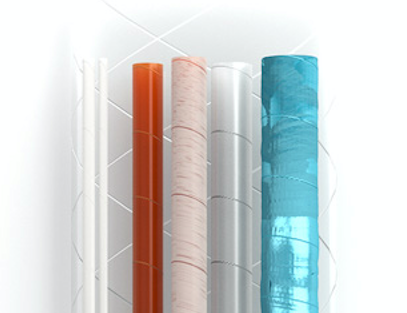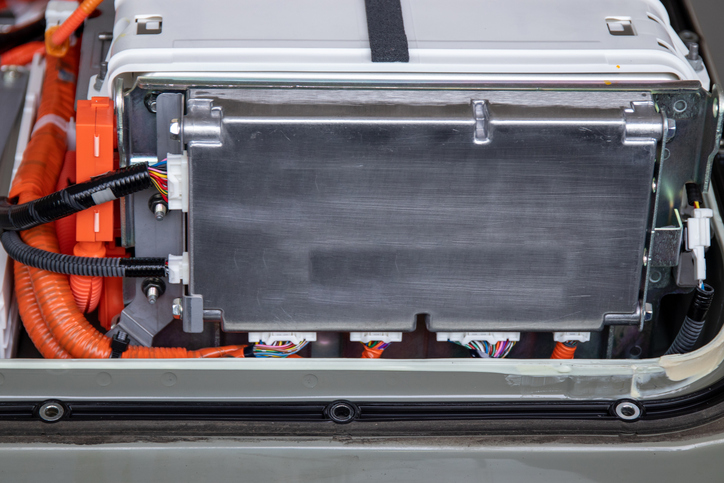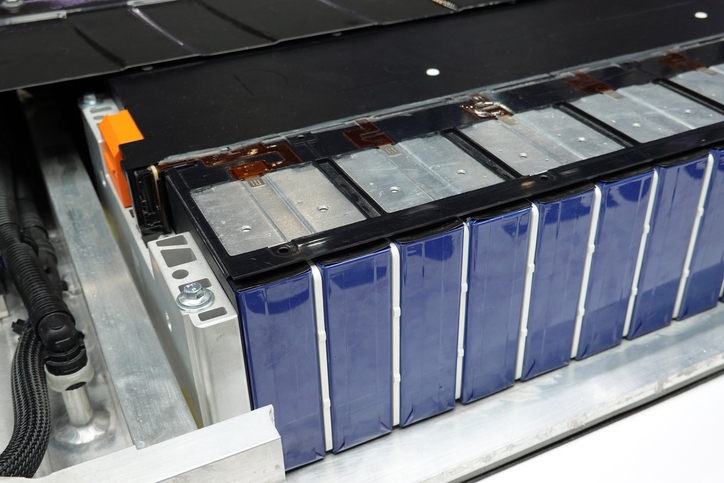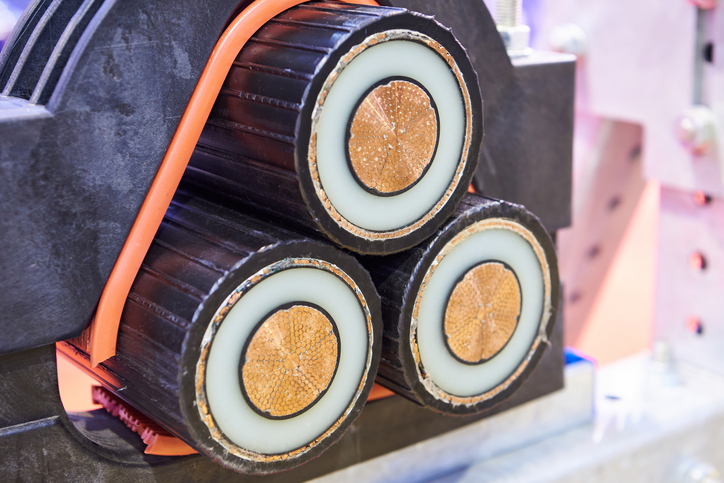Spiral wound tubing features the ability to uniquely tackle many challenges through its versatility — in composition and material used — and in the ability to add manufacturing and fabrication options, further optimizing efficiency and serving specific needs.
Spiral wound tubing is produced by wrapping several strips, or laminations, of adhesive coated materials such as plastic films, papers, or other substrates, alone or in combinations, at an angle, over a mandrel that forms the tube. The adhesives used are designed to be compatible with the materials used to make the tube and, when necessary, with chemicals and resins found in the end-use application.
This combination of materials leads to unique tube characteristics that are formulated with insulating properties in mind for many applications. Spiral wound tubing can provide mechanical (abrasion and cut-through), chemical (resistance to oils, greases, etc.), heat, and electrical (dielectric strength) resistance.
But this versatility, through the use of different materials to craft different resistances, is just the beginning. Further design enhancement can be added for many more high-performance applications such as sleeving for capacitors and batteries, thermal cutouts, slot liners, EMI shielding, and more.
Spiral wound tubes are not a one-size-fits-all product and are designed to service customer-specific requirements.
Examining Spiral Wound Tubing Features
The importance of finding improved ways to incorporate spiral wound tubing into your manufacturing process should not be overlooked. It is important to your application’s success to have parts that are designed using the best materials that work efficiently to meet your performance and process requirements. The right supplier can add value with creative design and manufacturing.
In addition, Electrolock can supply cut to length parts, long lengths, flared ends, sealed end caps, notched cuts, angled cuts, punched holes, and continuous length tubing among other options. These special configurations, used in combination with specifically designed spiral tubing materials, can enhance the end product. Here’s a quick look at many of the general spiral wound tubing features available.
Notched
Cut outs or notches can be fabricated in the tubes. These options include slotting, notching, flared ends, and more as dictated by your specific application.
Formed
Using thermoforming, we can fabricate tubes that feature a shoulder or end cap as needed.
Cut to Length
Precise cut-to-length fabrication is possible. This allows exact matching and leaves no wasted material if you require a solution that falls outside standard lengths.
Thin or Thick
Our fabrication abilities mean we can provide spiral wound tubing with very thin walls — less than 0.003” are possible. Or we can provide thick wall constructions, of up to 0.120” depending on the materials selected.
Colored
If you need visual touches for aesthetic or organization requirements, our spiral tubing features the ability to be flood coated with different colors.
Sealed
If a thermoformed end cap is not sufficient, our spiral wound tubing can be produced with heat-sealed end caps for improved capabilities.
Sonic Welded
For the ultimate in end caps and sealing, ultrasonically heat-sealed tubes can be made with high reliability.
Designing Spiral Wound Tubing
At Electrolock, understanding that each company’s needs are unique and deserve a unique engineering approach is one of our core principles.
With an extensive background in materials and design, Electrolock uses its experience to find the custom spiral wound tubing solution to fit your application and budget.
At Electrolock, we can supply spiral wound tubing using a variety of materials, with different performance characteristics that perform well in varying applications. This range of materials includes:
- Aramid/Nomex®
- Polyimide/Kapton®
- PET
- PEEK
- Ultem®
- Fiberglass
- Felts
- Foils
- Porex *UV reflective Tubing*
In addition to the fabrication options listed above and our ability to provide material options for spiral wound tubing, it’s important to also account for other tubing characteristics needed. Spiral wound tubing can be produced as heat shrink or non-shrink, conductive or semi-conductive, or made with high cut-through resistance products like Kevlar or glass. Electrolock also designs and produces UV reflective tubing used to sanitize inline air handling and fluid transport systems.
Explore Spiral Wound Tubing Features with Electrolock
Electrolock has produced spiral wound tubing, for high voltage, thermal, and battery applications for more than 60 years. Electrolock, Inc. uses its extensive expertise in design, material selection, and analytical testing to find the ideal solution for your specific application.
Electrolock, with its full in-house testing capabilities, validates all the performance requirements once a solution is found. As your partner, our team will be present at your facility during trials to ensure the performance of your application. When searching for a spiral wound tube, every application is different. So why compromise on performance by limiting your options to off-the-shelf products instead of working with a partner that provides the spiral tubing features you need?




